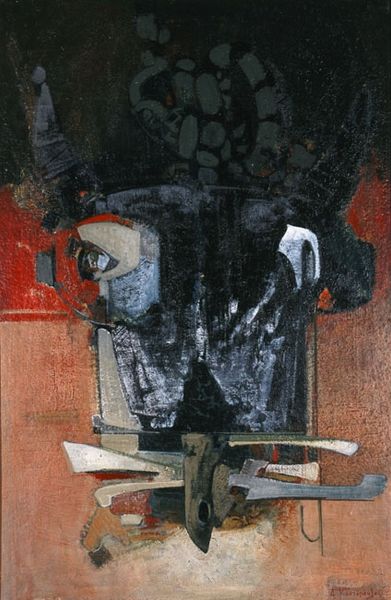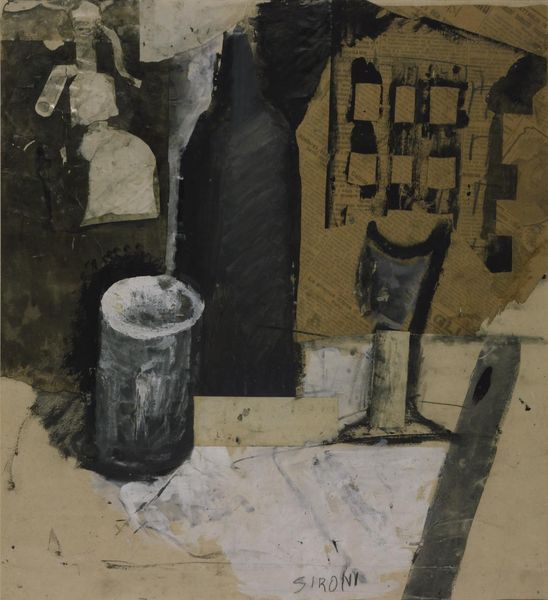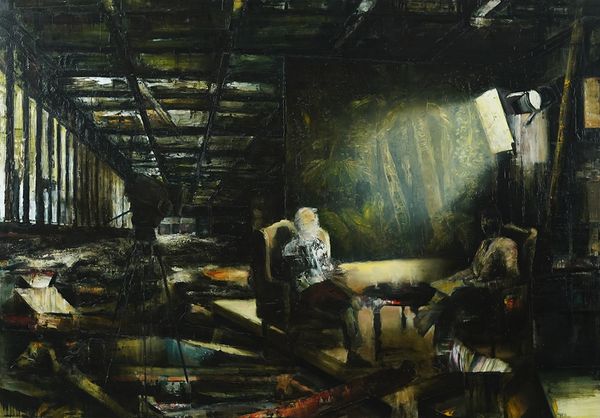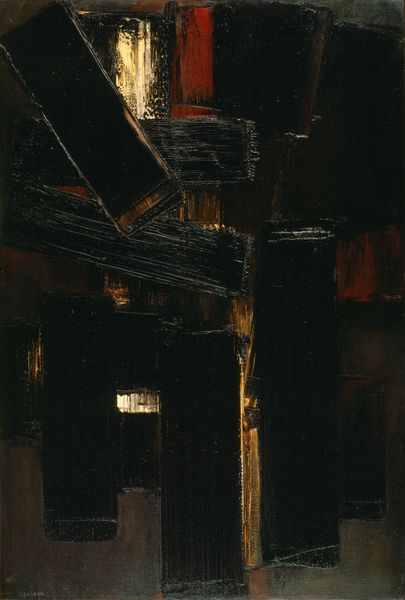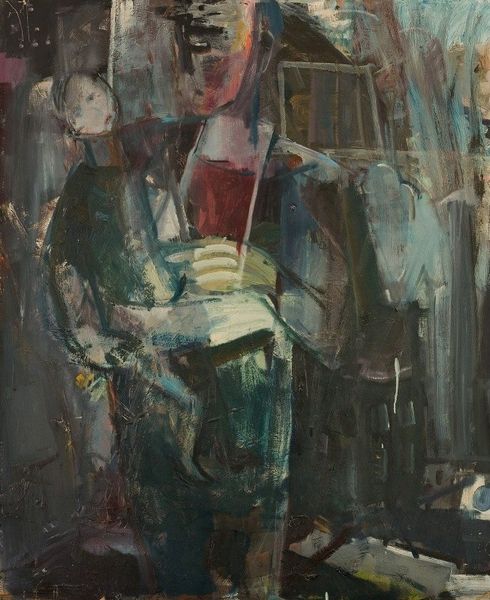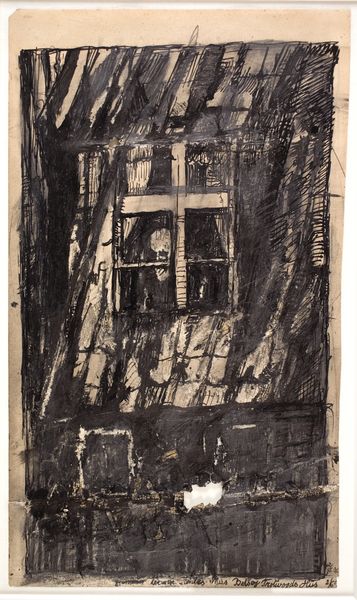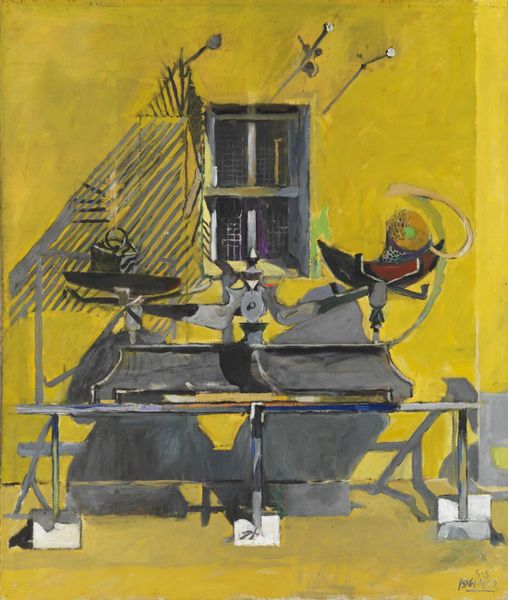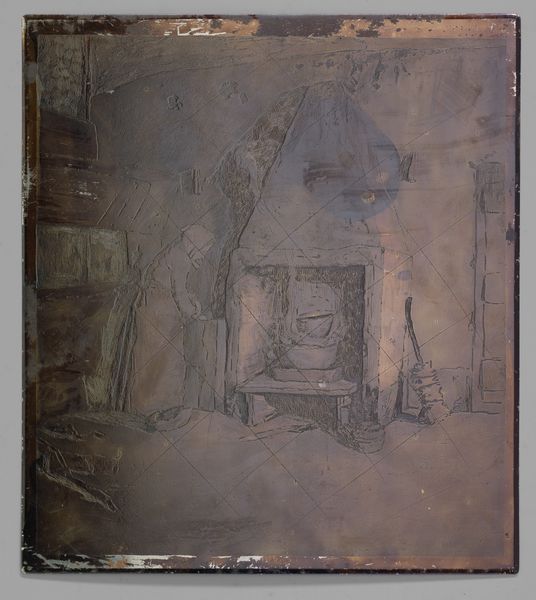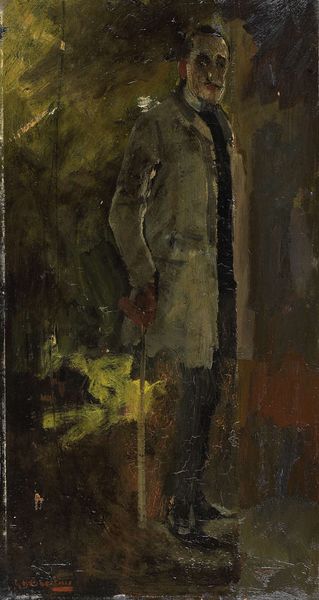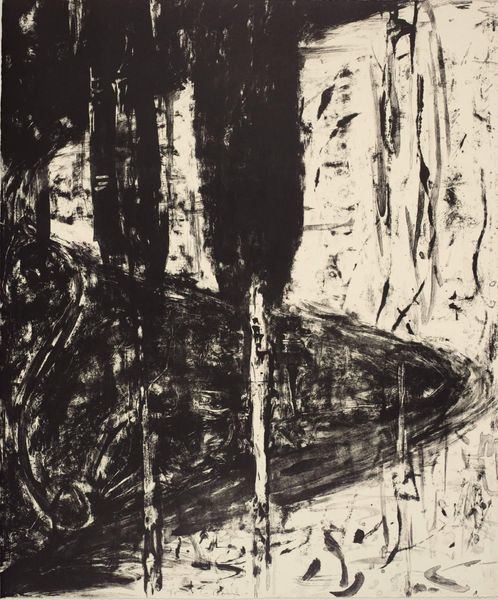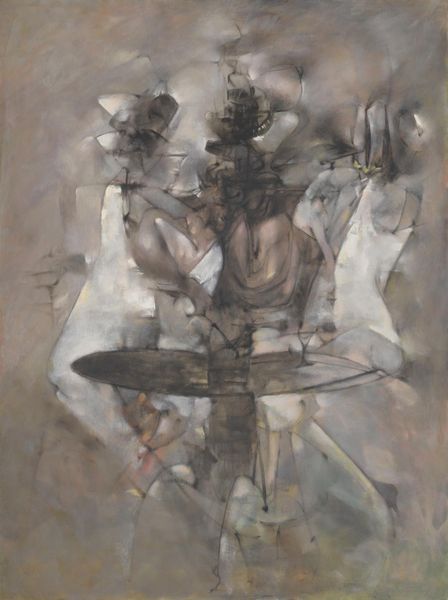
Dimensions: support: 673 x 476 mm frame (Carry Frame): 1030 x 928 x 148 mm
Copyright: CC-BY-NC-ND 4.0 DEED, Photo: Tate
Curator: Graham Sutherland created this drawing, Devastation, 1941: East End, Wrecked Public House, which resides here at the Tate. Editor: It's haunting. The skeletal remains of the building almost claw their way out of the darkness. Curator: Sutherland was employed as a war artist during the Blitz. He depicted the physical and social consequences of the bombing raids. Editor: Public houses, or pubs, have always been symbolic communal spaces. Seeing one like this, eviscerated, speaks to a deeper wound. Curator: Absolutely. The material reality is brick and mortar, wood and glass, but the destruction signifies community breakdown. The loss of familiar social structures. Editor: The black void surrounding the wreckage feels like a visual metaphor for the psychological trauma inflicted upon Londoners at the time. Curator: Yes, and considering Sutherland’s process, his repeated visits to the bombed sites, it is a study in consumption as much as in destruction. Editor: It's a powerful reminder of the human cost of conflict, rendered through potent symbolism. Curator: Indeed, a stark and resonant study of wartime experience.
Comments
tate 8 months ago
⋮
http://www.tate.org.uk/art/artworks/sutherland-devastation-1941-east-end-wrecked-public-house-n05735
Join the conversation
Join millions of artists and users on Artera today and experience the ultimate creative platform.
tate 8 months ago
⋮
This is one of several paintings Sutherland made of the Silvertown area of London’s East End. Close to the docks, this was one of London’s most impoverished areas and suffered some of the most devastating damage. The artist was greatly moved by the destruction and loss of life. He may have chosen the subject of a pub as a symbolic centre of a community. Though he never depicted dead bodies, he seems to use the broken building as a symbol, as its broken rafters suggest ribs. Gallery label, May 2007
